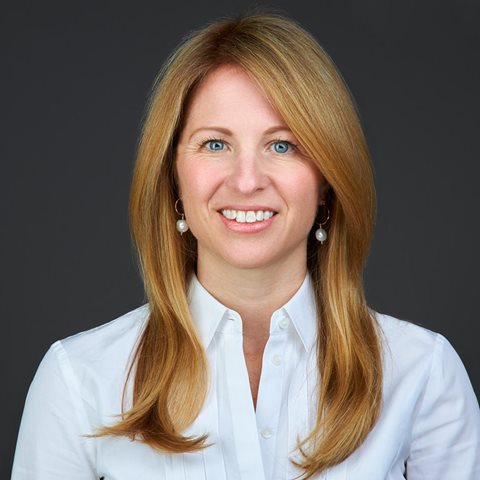A smart strategy is vital—but in today’s fast-changing world, it isn’t enough. Our research suggests that even high-performing companies fail to deliver on the potential of their strategy, to the tune of about 30 percent. But the right operating model can change all that. “The opportunity that comes from closing the 30 percent gap between strategy and performance is real,” according to McKinsey Partner Richard “Dickie” Steele. On this episode of McKinsey Talks Talent, Dickie joins McKinsey Senior Partner Brooke Weddle, Partner Bryan Hancock, and Global Editorial Director and Deputy Publisher Lucia Rahilly to share a new system for reexamining your operating model to create unique competitive advantage.
The following transcript has been edited for clarity and length.
Why the reset?
Lucia Rahilly: Dickie Steele, welcome to McKinsey Talks Talent.
Dickie Steele: Thank you very much. I’m delighted to be here.
Lucia Rahilly: Most leaders aren’t strangers to operating model fundamentals. In fact, your research shows that many leaders regularly rethink the way they operate. What’s putting pressure on default models now?
Dickie Steele: The world is speeding up, which is one fundamental reason to redesign. Another is that as we start to think about a world in which humans and AI agents work side-by-side in offices—just as we have alongside robots in factories—the skills environment is changing enormously. Third is how hard it is to manage change and build commitment. A great operating model gives you leadership and employee commitment to the strategy.
A great operating model gives you leadership and employee commitment to the strategy.
Post-COVID-19 and with the speed of change, people are exhausted. In many organizations, they flip from organizing one way to organizing another, and there’s a sense of “Here we go again” and “This too shall pass.” A great operating model needs to address this yearning—for employees to be able to commit, have a sustainable work experience, and really believe in the company again.
Lucia Rahilly: Historically, even organizations that have spent time developing smart, bold strategies have fallen short in terms of outcomes. What have they been getting wrong?
Brooke Weddle: Yes, that’s a common phenomenon. Often it comes back to not having people who embrace the strategy and the change it implies. People also may not know how to make decisions relative to the strategy.
Sometimes, it’s about not being organized for the new strategy. Some of our most foundational research on talent to value talks about critical roles and needing to know the top 50 roles in the organization that drive the bulk of the value.
What we tried to do with this latest research is ask: How do you understand the system of things preventing you from delivering on your strategy? Because it’s never just one thing.
Subscribe to the McKinsey Talks Talent podcast
Bryan Hancock: Totally agree. Another reason people are failing is that we don’t have clarity on how we’re delivering value. What is my role? What is my team’s role? If I’m working across a shared platform or an ecosystem, it’s too darned slow.
Not having those pieces in place is a symptom of a broken operating model. And in many organizations, that lack of clarity, speed, skills, and commitment underpins why executives want to change the operating model: They want to get better on those factors.
Tinkering with your org chart—again?
Lucia Rahilly: The first move many leaders make is to tinker with their org chart or the structure of the way they operate. What goes wrong when folks start with structure?
Dickie Steele: Structure is a very powerful lever. It can really change the way a company faces the market and sees itself and its economics. It’s beguiling. It sits right in front of the CEO—it’s the people around the table—and it feels very addressable. Questions like, “How should I structure business units?” or “What should be centralized or decentralized?”—those are very tempting CEO-level questions. And they need to be deliberated and acted upon. But they’re insufficient.
Starting with structure creates a raft of other problems that need to be addressed. You have all the same business problems as the day before, but now you have to explain the structure change, plus get used to playing in a new formation.
So don’t default to structure first. There are other levers that are subtler but potentially just as valuable. Think about the other elements of your organization that can lead to performance—and avoid this whiplash effect, which again creates change fatigue and “here we go again-itis,” as I like to call it.
Bryan Hancock: Dickie, the research you helped lead showed that 89 percent of organizations still use traditional hierarchical structures. People are tinkering with the middle management layer here, realigning a set of reports there. Why do you think executives go for those easier, less interesting changes rather than rethinking structure more fundamentally?
Structure is a very powerful lever. It can really change the way a company faces the market and sees itself and its economics. It’s beguiling.
Dickie Steele: One good reason is that there’s value in those structures. If you think of a business unit or a holding company, it’s designed for vertical control. Another traditional structure is a matrix—that’s where you want multiple dimensions of accountability, for collaboration and coordination.
A third common alternative is a functional structure. If you have the world’s best marketing team, the world’s best product team, and the world’s best supply chain team—that gives you capabilities. You then have to knit those together through journeys and operating processes.
Often, leaders change the business unit definition or add some matrix components. But those changes don’t give you speed, they don’t give you skills, and they may not give you the economic clarity you need—let alone employee commitment to the strategy. So new operating models have started to emerge. And while they’re not that common, they are purpose-built for a faster-moving, tech-driven environment in which people want to work in new ways.
But you need to be very considered. See how much value you can create by refining your existing model before embarking on a more wholesale redesign to an emergent model.
When to use an emergent model
Lucia Rahilly: Talk us through an example of an emergent model and when it might have more substantive impact.
Dickie Steele: We see three emergent models.
The first is the product and platform model. This is where you’re seeking to capture the real benefits of shared technology or technologies that represent themselves as scalable platforms. You build products on top of that technology, and you wrap that in processes that drive customer focus, customer success, and a resource allocation process that enables you to invest the right amount in the right platforms—and then the right amount in products, which, when they’re digital, can be revised on a rapid cycle.
Another is an enterprise agile model, where you repurpose all your functions, enterprise-wide, to work in cross-functional teams. There’s a stable backbone of core operating necessities—financial control, for example—but the organizational dynamism comes from identifying projects and creating a marketplace for those projects, then bringing the right cross-functional teams to bear.
Finally—and this is a more radical alternative—we see highly decentralized models where people opt in to work, such as GitHub. There are now many examples of platforms that can be opened up, and people can opt to do work at the task level. That’s very emergent; we see it in some emerging economies and tech environments, where people don’t want to take on a full-time assignment but they do want task-level work.
What’s your operating model fingerprint?
Lucia Rahilly: In the research, you outline what you describe as an operating model fingerprint. What is that fingerprint, and how can leaders use it to design for performance?
Dickie Steele: We chose that term because a fingerprint is a unique identifier, and organizations are all different. They all have history. They all have different strategies, different personalities, different capabilities.
What we were keen to do was identify the most important elements of an organization that, if addressed in a unique and thoughtful way, could drive performance. Instead of just pulling the structure lever, you diagnose what you’re trying to do, how you’re trying to be, across these different elements. For example, how do leaders show up in decision-making? Are they authoritative: Do they think they should make all the decisions, get the facts, and then give direction? Or are they more collaborative: Do they build consensus around decision-making?
That’s important to know, because different operating models require different leadership behaviors. For example, we talked earlier about an enterprise agile model. That’s all about bringing cross-functional teams together, giving them a stretch goal, and having them work out how to achieve that goal. That actually takes senior leadership out of many decisions. If you have an authoritative leadership style but you’re trying to move toward enterprise agile, you’ve got a very significant behavioral change to pull off.
Bryan Hancock: Dickie, why might two companies in the same industry have different fingerprints?
Different strategies require different operating models.
Dickie Steele: Imagine two data companies—even with the same access to data—that handle sales very differently. Some may want to organize geographically; others may want to organize around products. Different companies make different choices depending on how they can best serve their customers.
And that’s just one element. On other elements, some might say they want to reward people differently. I have clients who choose to emphasize that the total reward would be skewed toward company performance. Others said, “That’s not right for us. If we did that, given our leadership style and the way that we work, we’d actually reduce the performance focus of the company.”
There’s no one right answer. That’s part of the judgment call here: Different strategies require different operating models. You start with different assets and endowments and then make the best of what you’ve got—even as you move in a certain direction.
Brooke Weddle: That is a core insight. Organizations often approach operating model transformation wanting to know what their competitors are doing so they can replicate it or work against it. This new approach takes a totally different tack. It asks how we can lay out the discrete design choices for each of the 12 elements in this operating model system in a structured way. A lot of thinking and research has been done to articulate these design choices—and they are, in fact, choices.
The first step in an operating model transformation is to define a common language for talking about these design elements. One of the things we’re doing with this fingerprint—very practically, with top teams—is saying, “Dickie, you select the design choices you think would best enable our strategy, and then Brooke and Bryan, you do the same. Let’s see if we’re aligned as leaders of this company for what these choices should be, using this common language.” Then you can have a discussion about differences of opinion and work toward a solution. It’s foundational to map this out in a way that is consistent and, again, grounded in research about what’s happening in the world today, versus a framework that was used 25 years ago.
The first step in an operating model transformation is to define a common language for talking about these design elements.
Bryan Hancock: Are there exceptions or does this cut across every industry?
Dickie Steele: It’s no longer the case that there are hard-and-fast rules by industry. You could say the retail consumer goods sector is typically organized functionally, for example, but even there we’re seeing more scope for enterprise agile and more adoption of emergent models.
Organizations intentionally have a design. Well-designed ones flow. Take TV design shows, where a couple is building a house and makes a set of choices. It’s not a house if you don’t have a kitchen. But there are still different choices: it could be an open plan; it could be small. It probably has a fridge, but there might also be a larger fridge elsewhere. Periodically, you have to take a step back and ask, does this house still work for us as our environment and needs have changed?
Otherwise, you’re committing to live with an unaddressed strategy-to-performance gap. So it’s vital to think constantly about how to refine and make your organization flow better or be more fit for purpose.
Starting with the business case
Lucia Rahilly: We’ve said there’s variability in what might be right for different organizations, even within the same industry. How should leaders begin deciding what’s right for them?
Dickie Steele: Let’s take the question: As a leader, do you want to start by refining certain areas? Or is it the right time to go for a more wholesale redefinition of your operating model? You have to believe there’s significantly more value at stake if you’re going to redefine your model and take on the challenge of changing multiple elements—because there’s real risk there.
It’s a very deliberative process, proving the value case. One of the common frustrations I’ve seen, over the many years I’ve been designing organizations, is that people often make change without a rock-solid business case. On the other hand, the opportunity that comes from closing the 30 percent gap between strategy and performance is real.

McKinsey Talks Talent Podcast
Bryan Hancock, Brooke Weddle, and other talent experts help you navigate a fast-changing landscape and prepare for the future of work by making talent a competitive advantage.
So start with a business case, evaluate options as part of that business case, and then introduce incremental versus radical change and maybe different radical changes around a redefinition. And then evaluate how long it’s going to take to get there.
Bear in mind also that it’s really important to put your best people on the redesign and implementation effort. You have to make it a team sport and get the whole top team committed to the change. This isn’t something that’s done differently than any other part of the business. It should be anchored on a business case that’s fact-driven and focused on value.
As a result, the investments and the time required to make the change can be thought through together. When that happens, people build the conviction necessary to make a more fundamental change in their operating model. But they do that knowing the value they could have created with less risk, in less time, with just a refinement.
Tapping the right talent
Lucia Rahilly: You mentioned engaging your best people. Where do you see the biggest gaps in how leaders are staffing or developing talent to support organizational redesigns? Are there common missteps folks make here?
Brooke Weddle: Organizational design is almost treated as an exquisite skill in some cases, where leaders call someone in HR who knows org design for guidance. But we’re entering an era where, just as every senior leader needs to know something about strategy, they also need to know something about operating model design, because organizations need to evolve continuously to keep pace with change.
As Dickie said, leaders have to bring in the right talent early. They need to enlist that talent to really own the effort and drive it forward. They also ultimately need to scale that ambition across the organization, so that it doesn’t cascade to the middle and then stop without delivering on the full vision.
Bryan Hancock: Brooke, to your point on making this something that every leader needs to be able to do, one of the things I liked most about the research is that it’s a checklist of very specific, very practical elements that leaders need to land on. It democratizes the ability to think through what your operating model should be.
Dickie Steele: I love the way you used the term democratize. Org design has historically been not just the preserve of a CEO and their chosen expert; it has been a closed process, done in private. But some of the most inspiring examples of effective operating model change involve a leader who has brought their team together, taken them to see other ways of organizing, and had a very open and frank conversation about what needs to be different—even being explicit that they’re not going to make any decisions for 90 days.
They’ve then had multiple working sessions to look at different ways of organizing and have chosen parts of the business to trial certain things—front-runners or lighthouses. In other words, they’ve decided to build a beacon that will inspire the rest of the organization, and to find out how to tailor a model to their unique circumstances, informed by their fingerprint.
How do I disrupt the way I work and my role using AI so that it doesn’t disrupt me?
So, an open, mature dialogue about how to get better is increasingly an important part of this. And it’s not a utopian idea. We’ve done participative redesigns where the top 50 or 100 leaders have all been involved in making recommendations as to how elements of the org model should change.
Brooke Weddle: One of the things I’m discussing with a lot of organizations these days is how to get better at continuous learning. How do I learn fast and outlearn others in this era of AI, and how do I disrupt the way I work and my role using AI so that it doesn’t disrupt me? You could apply that same mindset to operating model transformation.
I think the healthiest approach is to talk about what’s possible and where you want to go based on your strategy, creating the safe space to have honest discussions and to learn. That is not easily done. But hopefully that’s a bit more possible with this set of tools and the common language anchored on value.





